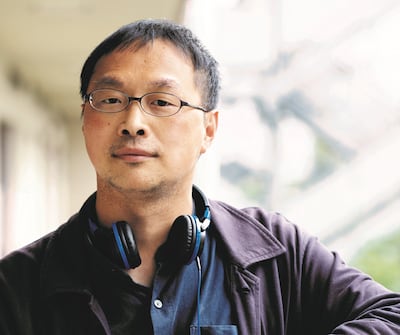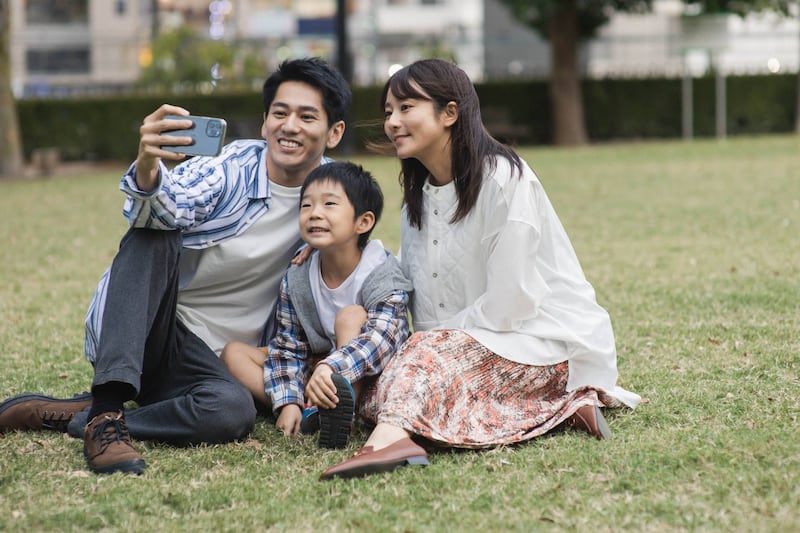Fans of the outrageously tragic films of the Japanese director Koji Fukada will be primed to read the name of his latest movie, Love Life, ironically. His film Harmonium, which won Un Certain Regard at Cannes in 2016, chronicled an act of pity that leads to life-changing injuries for a child and to a double suicide. In The Real Thing, a truncated 2020 TV miniseries that found its way on to the film-festival circuit, a homeless femme fatale and an obsessive, doomed romance ruins multiple lives.
Love Life is inspired by a song of the same name by Akiko Yano, aka the Japanese Kate Bush, that has haunted the filmmaker for more than two decades. “I heard it for the first time in 2000. I was very impressed with it and listened to it repeatedly,” says Fukada. “I initially thought of it as about a woman who has split up from her husband. But then I came to the conclusion that it can be interpreted in all kinds of different ways. The first line is, ‘However far apart, we can still love each other.’ That can refer to a family that has moved far away or a parent who has lost a child.”

Love Life concerns Taeko (Fumino Kimura) and her second husband, Jiro (Kento Nagayama), a couple who, despite conservative attitudes towards remarried women, live a quiet, happy life with her boardgame-champion son, Keita (Tetsuda Shimada). A tragic accident brings the boy’s father, the destitute and deaf Park (Atom Sunada), back into her life. Their connection is linguistically reinforced: Taeko, who works at a social-welfare office, is the only person who can translate Park’s Korean signing.
“The idea I hit on was in order to create some kind of tension between this couple,” says Fukada. “I wanted to create a situation where the ex-husband and the wife have this common language that the new husband doesn’t understand. I came to appreciate that sign language is an incredibly rich language and also a visual language that uses space. There’s a different question now for me. Not why I used a deaf character in the movie. Why did I not use a deaf character before? Deaf people live in the same world as the rest of us.”
Dancing with the Stars: ‘I’ve had the best time of my life. I feel super fit,’ chef Kevin Dundon says as he is voted off show
Oscars 2025 red carpet: Ariana Grande sets the standard while Timothée Chalamet stood out in ‘Kerrygold’ yellow
Róisín Ingle puts a Thermomix to the test: ‘I am a convert but there’s one enormous catch’
Fukada often cites Éric Rohmer’s The Green Ray and Victor Erice’s The Spirit of the Beehive as key influences, but his cinema has been largely shaped by his work with the Seinendan theatre troupe.
“Modern Japanese theatre started with importing foreign plays like Shakespeare and Chekhov, and they were translated into Japanese,” he says. “The speaking style and the acting style were imported from that kind of work. So theatre speech was very unnatural. After I graduated in films and philosophy, I came in contact with the Seinendan group. Their plays are contemporary and conversational. So that’s where I learned to incorporate spoken, conventional language into drama and theatre.”
Sayonara, a 2015 drama developed with the robotics scientist Hiroshi Ishiguro, was very much in keeping with Fukada’s central idea that all human beings are inherently lonely
Fukada also says, “I don’t think that the role of the movie is to punish people. A movie isn’t a court. People do bad things and good things. My job isn’t to depict some ideal world where people will stop doing these bad things. It’s just to show life the way it is. There’s a quote from a famous Japanese critic: If you follow the 99 sheep, that’s not literature; if you follow the one that strays from the path, then that’s literature.
He remains one of cinema’s great innovators. Sayonara, a 2015 drama developed with the robotics scientist Hiroshi Ishiguro, was the first movie to star a gynoid performing opposite a human, even if its forbidding vision of human-AI relations was very much in keeping with Fukada’s central idea that all human beings are inherently lonely.

“We live in the age of innovation,” he says. “It was very interesting to do something that nobody had ever done before. Movies are not as good as literature at delving into philosophical subjects, like what people are and what our lives are. A written text can describe things that you can’t see on a screen. To be able to collaborate with a nonliving android and to put a non-human in front of a camera was a good opportunity to bring these topical issues of what life and consciousness are into a movie.”
That adherence to naturalism extends to the director’s complicated characters. In 2019′s A Girl Missing, the pointedly cryptic heroine is repeatedly misinterpreted. In Love Life, Taeko wrongly assumes that her ex-husband desperately needs her help.
“I don’t like the word ‘character’,” the director says. “For example, a big issue in Japan today is what we call power harassment. So it’s a powerful person harassing a person in a lower position. But just because that person harasses an employee, it doesn’t mean that they harass everybody. They can be an incredibly good husband or wife. In different situations they will behave completely differently.”
Love Life opens Friday, September 15th




















